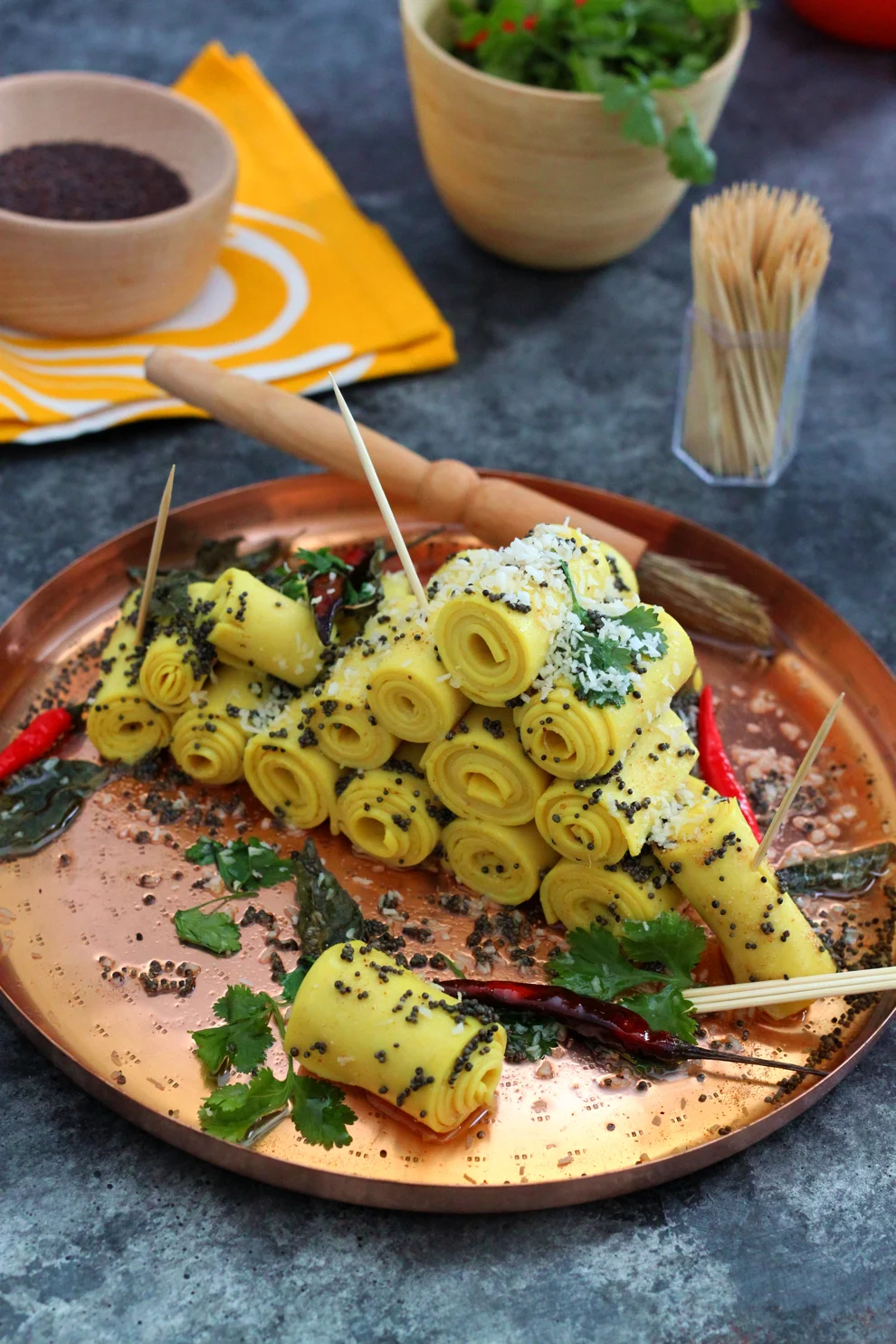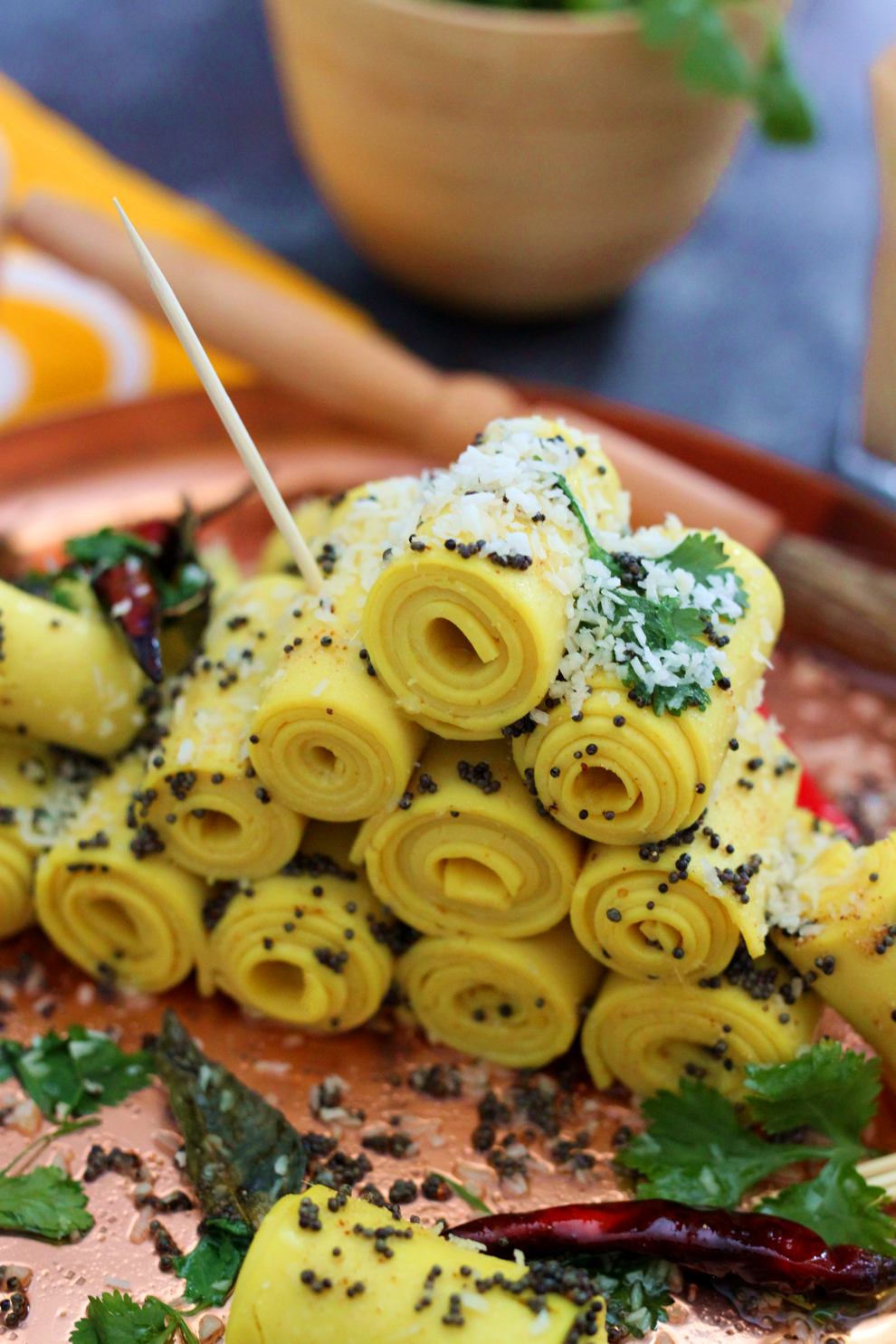Introducing Khandvi
Another savoury Gujarati snack that’s known for having these explosive and delicious flavours is Khandvi. It’s a village-style rolled pasta made with chickpea flour and yoghurt (in this case, soy yoghurt) which is always served with a tempering of mustard seeds, curry leaves and chillies crackled in hot oil. The sound and smell of the smoking oil hitting the smooth surface of the pasta rolls gives me all the feels. The texture is soft, silky and it melts in your mouth, unlike the wheat pasta we’re all so used to. If you’re a pasta lover on the lookout for something a little bit more unusual, you’ve got to try these. Or maybe you remember your grandma making these for you when you were a kid… I’ve always been fascinated by how food travels. All cultures have their own versions of pasta, bread, rice dishes, dumplings, pancakes and so much more. While Indian street food trends are currently all about Pasta Dosa and Maggi noodles, a brief look back into rich regional cuisines will reveal pasta-like treasures such as these Khandvi rolls, Daal Dhokli, Sev and Gathia. And boy, are they good. I love Khandvi it because it requires very few ingredients to make and it’s also one of those rare Gujarati Naasto dishes (tea-time snacks) that isn’t fried. As much as I adore Bateta Vada (fried spicy potato balls), I know it’s not a treat I’ll scoff every day. These on the other hand, I’d go for Khandvi any time, any day.
Tips for making perfect khandvi
Here are some things to bear in mind when making Khandvi (grandma style) as well as some new school tips for getting your noodle sheets rolled thinly and evenly.
Use a blender for a smooth, cohesive Khandvi batter. Lumps aren’t wanted here. Wait, are lumps ever wanted anywhere? Cook the Khandvi batter in a non-stick pan, low and slow. It thickens pretty quickly so you want to give yourself time to get those pesky lumps out. Use a silicone spatula or whisk to stir when cooking the Khandvi batter. Pay close attention to the consistency of the batter. It’s ready when the batter no longer falls off the spatula when lifted and begins to set on the sides of the pan. Think peanut butter consistency. To check if the batter is ready to spread, you can spread a little bit over a steel plate or piece of foil, allow it to set for a few minutes and then see if it rolls up easily. If not, cook it a little longer. This one is super important… You need to work quickly! Khandvi batter doesn’t wait around. Once it reaches the right consistency, it must be spread very quickly. It helps to have your foil sheets ready on the work surface before you even start cooking the batter. A lot of recipes call for the surface of the foil or thali you’re spreading the batter on to be greased. Do this VERY lightly otherwise the batter is going to slide around and clump up like no man’s business. This will make it impossible to spread. To spread the khandvi, I use a silicone spatula. Once it’s spread as evenly as I can get it (and still hot), I cover it with a piece of cling film and then use a rolling pin to roll it as thin as I can get it, about 1-2mm. If you have one, use a pizza cutter to slice your set Khandvi – it’s so much easier and neater than trying to use a knife. This recipe is for Vegan Khandvi and uses soy yoghurt but the traditional version just uses regular yoghurt. Serve the Khandvi at room temperature simply by themselves, with masala chai or your favourite chutney.
Share this recipe







